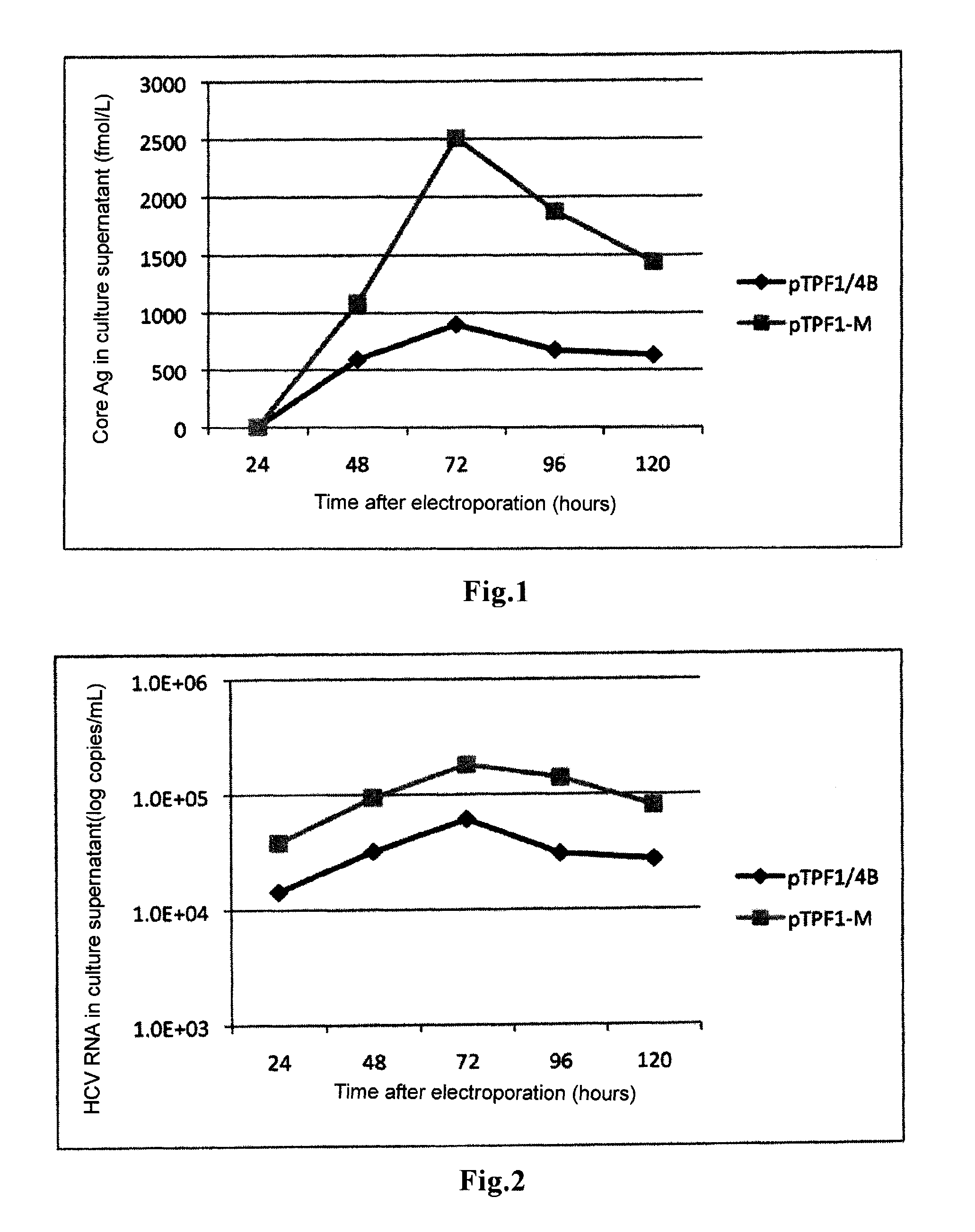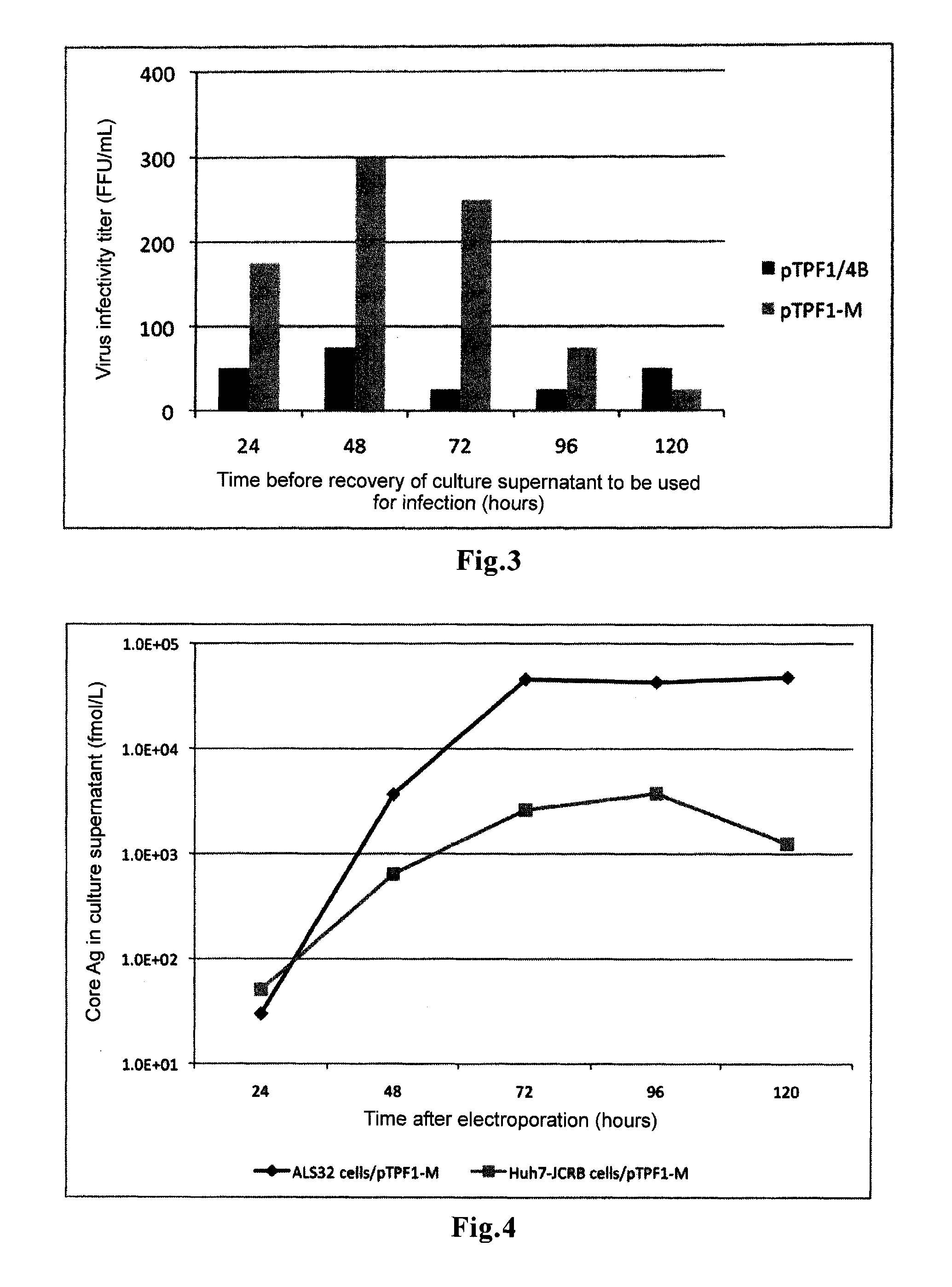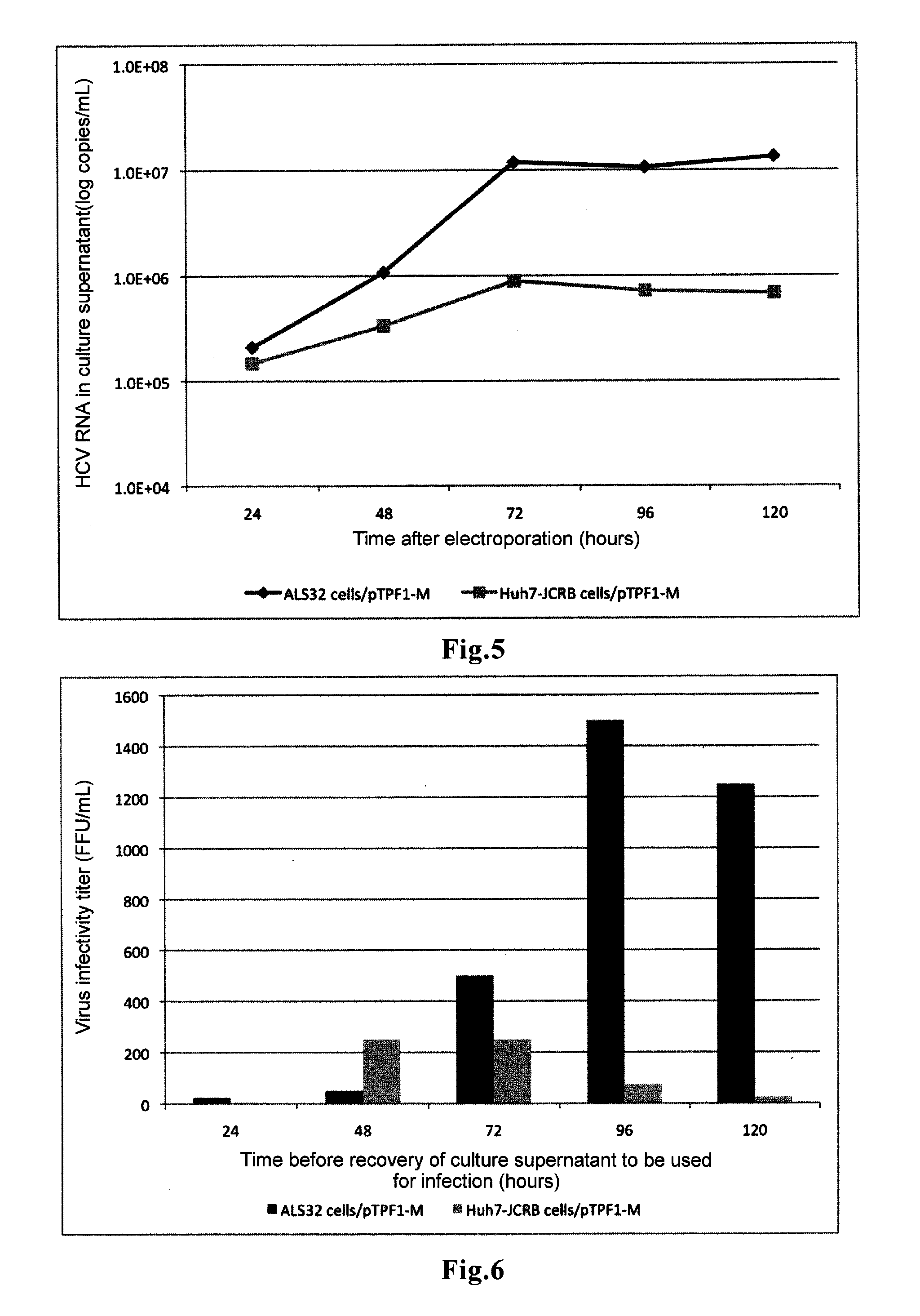Hepatitis c virus gene
a technology gene, applied in the field of hepatitis c virus, can solve the problems of low growth efficiency, low infection efficiency, and system cannot be used as a drug screening system, and achieve the effects of suppressing/inhibiting exacerbating hepatitis, high replication efficiency, and high reinfection efficiency
- Summary
- Abstract
- Description
- Claims
- Application Information
AI Technical Summary
Benefits of technology
Problems solved by technology
Method used
Image
Examples
examples
1. Introduction of Mutation into HCV NS2 Protease Region
[0059]Using the pTPF1 / 4B gene as a template, in the presence of the AgeI primer 5′-accggtgagtacaccggaattgccaggacg-3′ (SEQ ID NO:40) and the FseI primer 5′-atttgggtgattgggcccttcgggccggcc-3′ (SEQ ID NO:41), polymerase chain reaction (PCR) was performed using Takara LA Taq DNA polymerase (Takara Shuzo Co., Ltd.) by thermal cycling reaction by 20 cycles of 94° C. for 20 seconds and 68° C. for 4 minutes, to amplify the vicinity of the NS2 protease region in the TPF1 / 4B genome.
[0060]The amplified fragment was separated by 1.0% agarose gel electrophoresis, and the DNA fragment was recovered using the QIAquick gel purification kit (QIAGEN) according to the method recommended by the manufacturer. The recovered TPF1 fragment was ligated to pGEM-T easy vector (Promega) according to the method recommended by the manufacturer, and the DH5a strain was transformed with the obtained plasmid. A transformant which was resistant to ampicillin and...
PUM
| Property | Measurement | Unit |
|---|---|---|
| Length | aaaaa | aaaaa |
| Length | aaaaa | aaaaa |
| Length | aaaaa | aaaaa |
Abstract
Description
Claims
Application Information
 Login to View More
Login to View More - R&D
- Intellectual Property
- Life Sciences
- Materials
- Tech Scout
- Unparalleled Data Quality
- Higher Quality Content
- 60% Fewer Hallucinations
Browse by: Latest US Patents, China's latest patents, Technical Efficacy Thesaurus, Application Domain, Technology Topic, Popular Technical Reports.
© 2025 PatSnap. All rights reserved.Legal|Privacy policy|Modern Slavery Act Transparency Statement|Sitemap|About US| Contact US: help@patsnap.com



